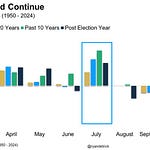To investors,
The Social Security program was created by President Roosevelt in August 1935. The initial idea was ‘a social insurance program designed to pay retired workers age 65 or older a continuing income after retirement.” While the efficacy of the program has long been debated, the financial support has been available to the oldest Americans for more than 80 years. There are more than 70 million Americans who are collecting benefits today.
There is one big problem though — the program is running out of money.
In order to understand the problem, we first have to unpack how the program works. Social Security is an insurance program. In the most basic sense, workers pay a percentage of their salary into the program during their working years under the promise that they will receive monthly payments from the government once they retire.
The government can make these payments to retirees because they are taking the money that workers are paying into the program and investing it with the goal of growing the capital at a faster pace than people are being paid out. Sounds good, right? Well, that theory has not really been reflected in reality.
According to Rachel Greszler, who serves as a Senior Research Fellow at the Grover M. Hermann Center, “the Social Security Board of Trustees reports that the program will run out of money in 2034. That means anyone 55 or younger today won’t receive a single full benefit.”
This is a major problem. But it is not a new problem. Milton Friedman wrote the following in a 1999 New York Times op-ed:
Social Security has become less and less attractive as the number of current recipients has grown relative to the number of workers paying taxes, an imbalance that will only get bigger. That explains the widespread support for individual investment accounts. Younger workers, in particular, are skeptical that they will get anything like their money’s worth for the Social Security taxes that they and their employers pay. They believe they would do much better if they could invest the money in their own 401(k) or the equivalent.
Friedman then went on to describe what the government would do as the underfunded status of the Social Security program became more obvious:
Taxes paid by today's workers are used to pay today's retirees. If money is left over, it finances other Government spending -- though, to maintain the insurance fiction, paper entries are created in a ''trust fund'' that is simultaneously an asset and a liability of the Government. When the benefits that are due exceed the proceeds from payroll taxes, as they will in the not very distant future, the difference will have to be financed by raising taxes, borrowing, creating money or reducing other Government spending. And that is true no matter how large the ''trust fund.''
And to end the New York Times op-ed, Friedman explained the obvious difficulty with catalyzing change within the program:
I have no illusions about the political feasibility of moving to a strictly voluntary system. The tyranny of the status quo, and the vested interests that have been created, are too strong. However, I believe that the ongoing discussion about privatizing Social Security would benefit from paying more attention to fundamentals, rather than dwelling simply on nuts and bolts of privatization.
So let’s fast-forward to the present day. Has anything changed? Not really. Are there any major changes on the horizon? Not really. In fact, there is more awareness than ever of the lack of sustainability with Social Security, yet nothing has been done to address the issue.
I did some digging and found some insane stats about how many people are worried about this…











